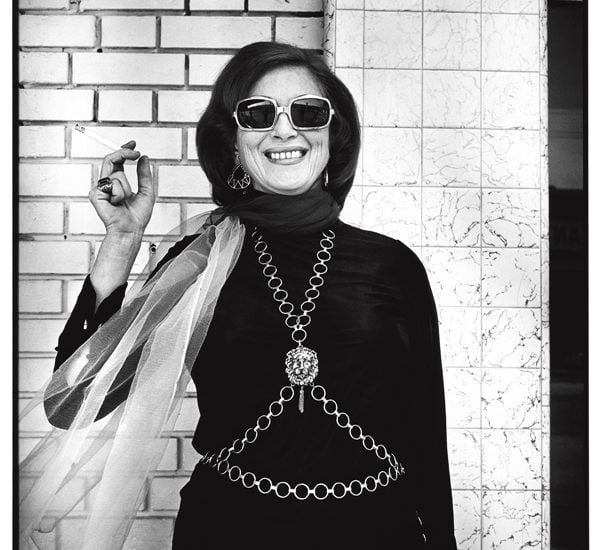Dennis Feldman’s first book, titled, American Images, is comprised of pictures he took while traveling around the country. In 1977, it made the New York Times‘s ten best photo books of the year. We spoke to Feldman about his latest book, Hollywood Boulevard: 1969–1972, and why it took 40 years to finish it.
How did you get into photography?
I was in college and a guy who wanted to be a film director and whose father was a screenwriter came into our dorm room and he said you can’t be a film director without knowing photography. After which my heart sank, and I ran over to the visual arts department because I wanted to be a film director. I immediately got into it and fell in love with it. I was introduced to Robert Frank, Walker Evans, Frederick Sommer, Diane Arbus, and August Sander. And I thought it was amazing and I said I wanted to do it. I believed at the time that there was such a thing as documentary photography—today it’s a style, a way of convincing. It told you something about the world.
Photograph by Dennis Feldman.
Why did you start photographing the boulevard?
My wife at the time had a job at a bookstore on the boulevard. A bookstore of movie posters, memorabilia, books about movies, it’s still up there. It was at the time a very famous store. I saw it and I saw these characters, it was an iconic street. The people there seemed to display this iconography of the American imagination. Characters of the American fantasy. I went up there with a Rolleiflex camera; it was hard for me, but I asked people if I could take their pictures.
What’s your view of the area today?
It’s touristy around the Chinese Theatre. And they built up more things like Ripley’s Believe It or Not where they used to have stores. One of the reasons why people came to the area is because of its cheap housing. But it still has a grubby side. It still attracts a set of characters.
There was a pair of twins that I wanted to photograph. They had composed serious faces, folded hands. They never walked together, they walked separately and very quietly down the street. And I asked them both to photograph them. They never said a word, they just walked around me. I mean I just saw everything as being in a fairy tale. People brought their psychological baggage out onto the street. That’s how I viewed it [the boulevard].
Photograph by Dennis Feldman.
Why release the book now, 40 years later?
I’ve been a screenwriter for about 25 years now. I was dealing with my own identity issues, and baggage, then. Trying to become who I was going to become, like a lot of those people [were doing]. This was a project that was complete, but never finished. I was pretty intent on making this book, which was a ’70s version of what Robert Frank and Walker Evans did in the ’50s. This kind of portrait of the state of mind of America.
The ’70s was a special decade in that there was all this freedom, this new found freedom to dress extravagantly, to be whoever you wanted to be. It was about being hippie, the freedom of coming out as gay; sexual and gender freedom, the freedom for a man could grow his hair long.
Photograph by Dennis Feldman.
What do you see now that you didn’t before?
Diane Arbus said she likes her awkward pictures more now and I do, too. I like awkwardness and ambiguity. I’m much more accepting now of what I used to call flaws. And it allows me to see a lot of the characters individually for what they were that I was too rigid to see when I was much younger. Almost all of them have never been seen before.
Photograph by Dennis Feldman.
That’s exciting. What happened to you in Japan?
I went to Japan for 5 months; I asked kids my age what they were studying. And a lot of them were studying electric engineering. Everyone I knew back home was playing the guitar and studying art history and philosophy. They [my Japanese friends] had to get careers, and we [Americans] were choosing not to have those kinds of careers. I don’t think that’s how people thought in the previous generation. We all thought we could be free and live on air.
